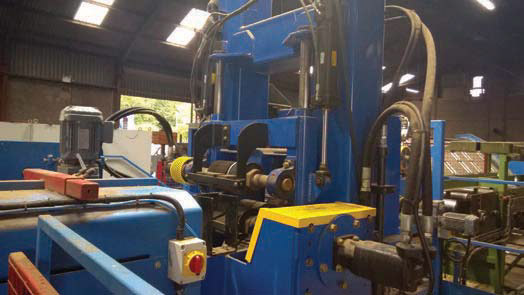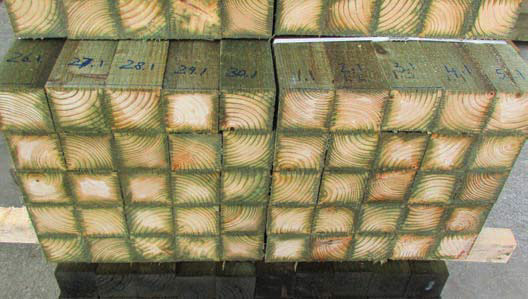Incisive debate
22 April 2019During Wolman’s one-day UK conference in November last year, BRE research director Dr Ed Suttie presented the final results from BRE and BASF Wolman GmbH’s joint incising study
At last year’s BASF conference Dr Ed Suttie, research director at BRE explained the development of incising technology in the UK as a way of increasing the penetration of preservatives into timber.
First tests with incised timber were made by the BRE as far back as 1972 when a field trial was run in the UK on Russian whitewood. The results proved an improved solution uptake of the preservative after incising. However, the importance of incised treated timber only increased with the ban of CCA in the early 2000s when discussions about premature failures of fence posts treated with alternative preservatives came up. Since then BRE has intensified incised treated Sitka spruce testing at two test sites, in Elgin and Garston.
Wolman and BRE started their study on incised Douglas fir, Sitka spruce, Scots pine and larch in 2014. The tests were positive and showed that all tested timber species had improved preservative uptake and penetration. Nevertheless, significant differences were observed between the timber species and it became obvious that further research should cover different incising machines and different timber species.
The second phase of the incising study began in 2016 and was carried out on commercial incising machines. The goal was to generate independent data on the impact of individual commercial incising machines on the penetration and retention of wood preservatives in Sitka spruce and Douglas fir for a 15-year desired service life treatment.
The study concluded that posts were better penetrated and met the BS 8417 penetration as well as retention requirements. All three commercial incising machines in the study met these requirements for a 15-year desired service life in the case of Sitka spruce.
However, only two out of three tested machines were able to meet these standards in the case of Douglas fir.
In the final phase of the commercial incising machine study, conducted in 2018, treatment for a 30-year desired service life was investigated. The results indicated that incising to 12mm depth was challenging for all four tested commercial incising machines and conditions. Only two out of four machines met BS 8417 (Use Class 4, 30-year desired service life) penetration and retention requirements for Sitka spruce. Only one out of four commercial incising machines met these requirements for Douglas fir.
In summary, the four-year study demonstrated that commercial incising technology has various advantages, including uniform treatment penetration and improved performance of treated timber. This came, however, at the cost of a slight strength reduction of the treated timber.
Incising has gained increasing market acceptance over the years and this is due to the fact that, on the one hand, incising is recognised by the Wood Protection Association Benchmark Scheme and, on the other hand, commercial incising machines have gained acceptance in the market.
However, at this point in time the usability of currently available incising machines for 30-year desired service life treatment in Use Class 4 does not yet seem as straightforward as for 15-year desired service life treatment.
Further incising studies with commercial incising machinery are recommended.

